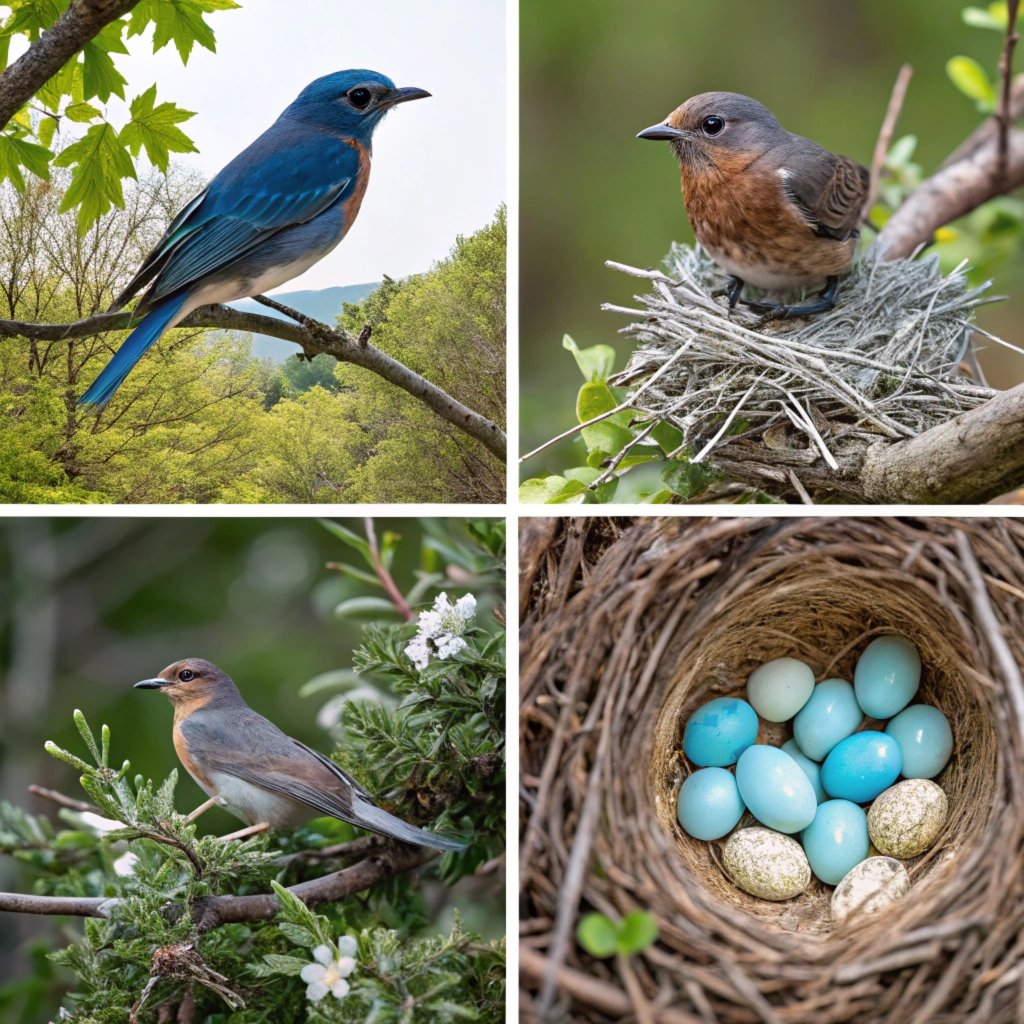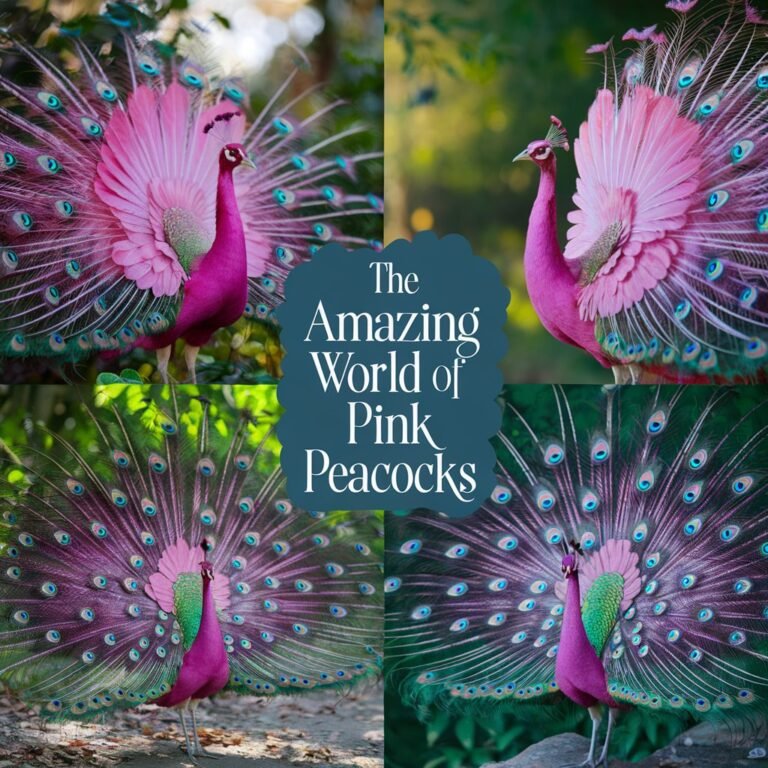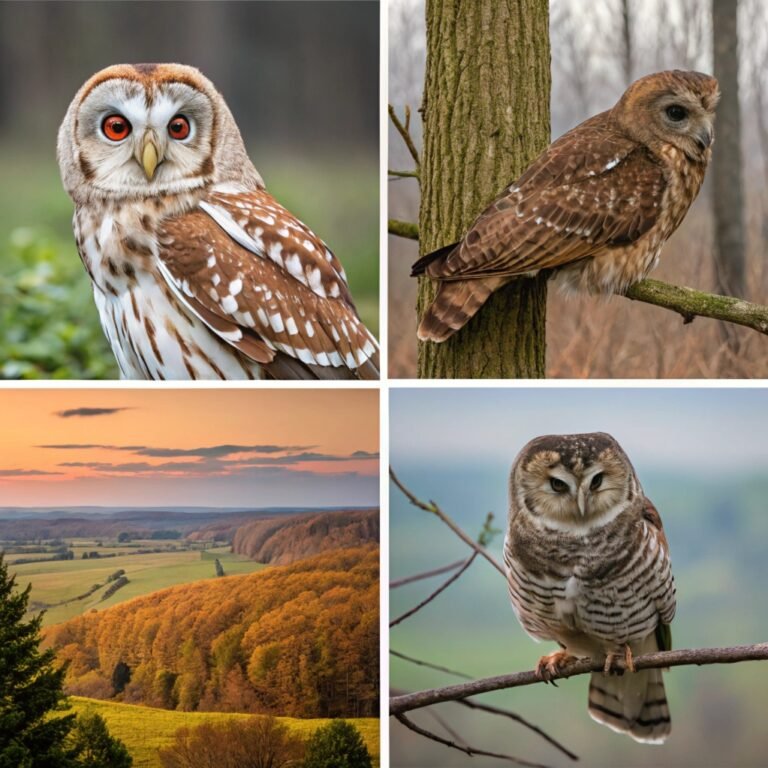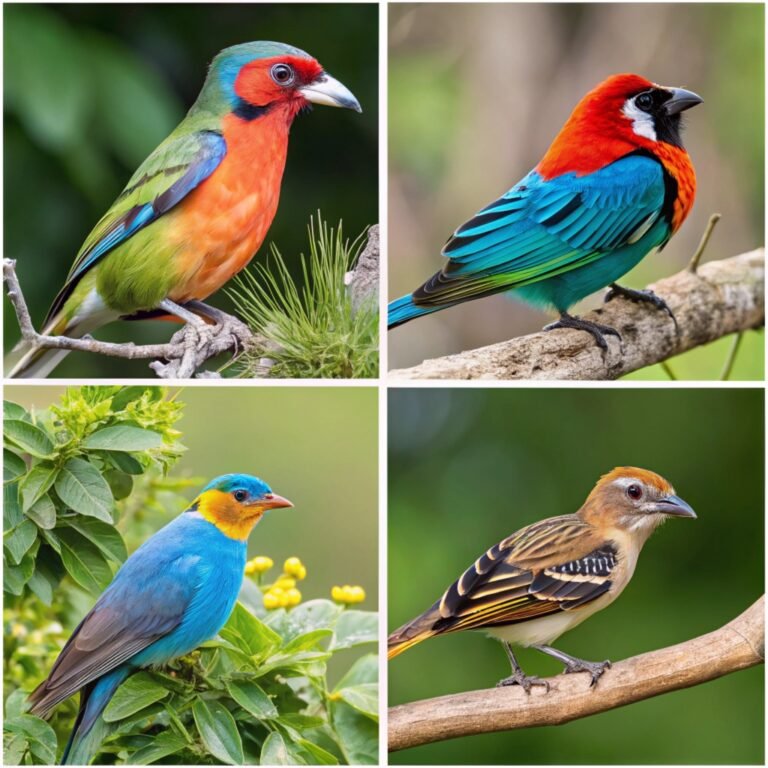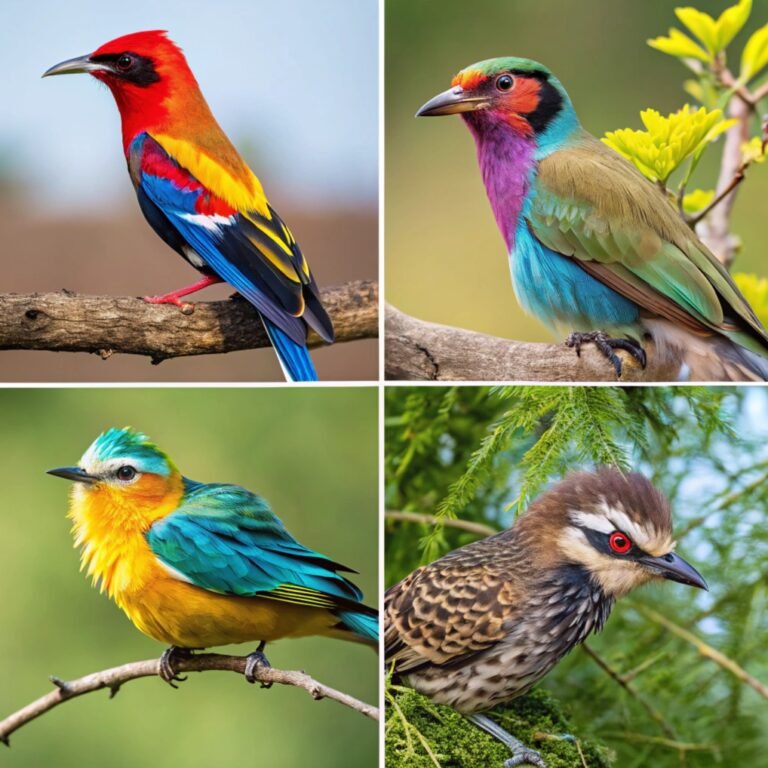10 Birds That Lay Blue Eggs: A Rare and Beautiful Sight in Nature’s Avian World
The avian world is a treasure trove of natural wonders, and among its most captivating features are the rare and beautiful blue eggs laid by certain bird species.
While most birds produce eggs in shades of white, brown, or speckled patterns, a select few grace their nests with eggs in stunning hues of blue, from pale sky to deep turquoise.
This unique coloration is not just a visual treat for bird enthusiasts but also serves important biological functions.
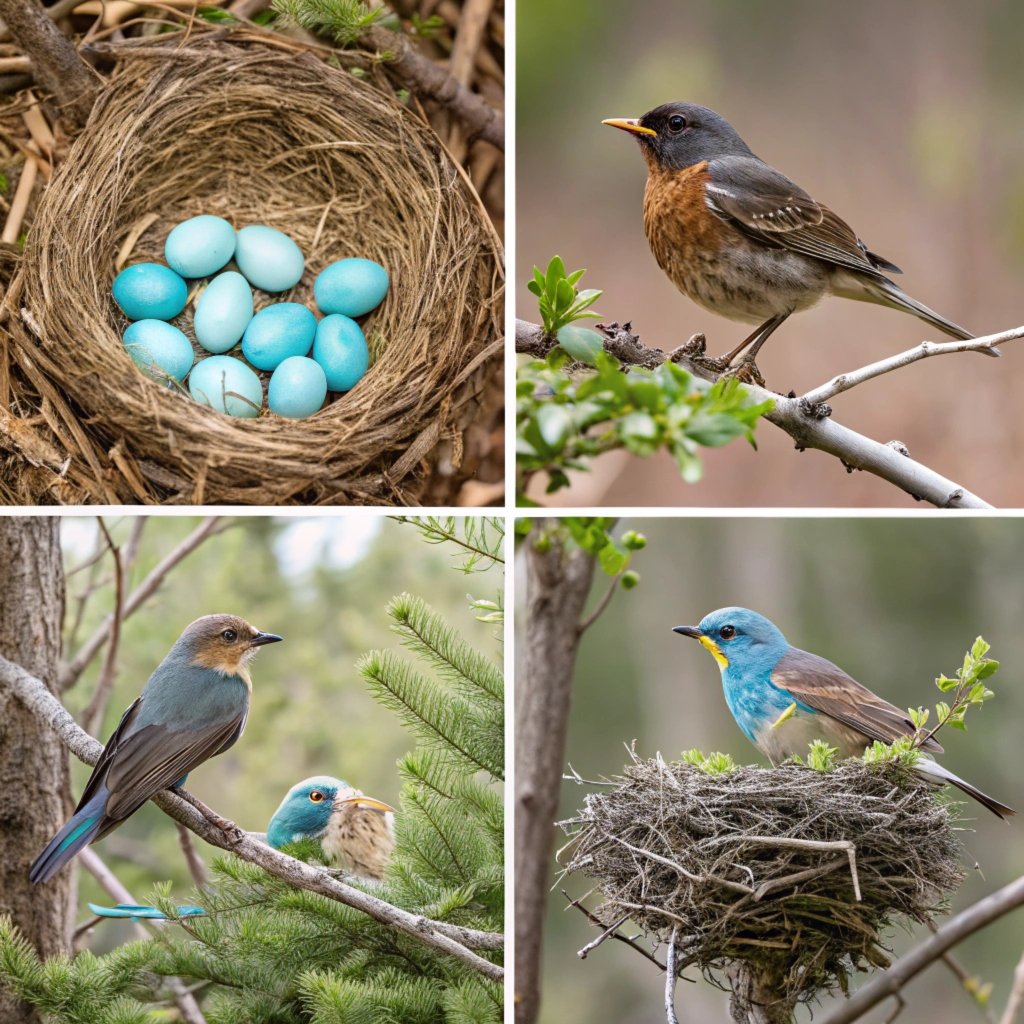
Key Takeaways
- Biliverdin Pigment: The blue color in bird eggs is primarily due to a pigment called biliverdin, which is deposited on the eggshell during the laying process.
- Biological Functions: Blue eggs serve multiple purposes, including camouflage and protection from UV radiation, contributing to the survival of developing embryos.
- Indicator of Health: The intensity of the blue color often correlates with the health and diet quality of the mother bird, potentially signaling fitness to potential mates.
- Diverse Species: Birds that lay blue eggs come from various families and habitats, ranging from common backyard species like the American Robin to more exotic birds like the Snowy Egret.
- Variation in Shades: The blue color of eggs can vary significantly, from pale sky blue to deep turquoise, even within the same species.
- Nest Locations: Blue-egg laying birds nest in diverse locations, including tree cavities, shrubs, marshes, and even urban structures.
- Conservation Importance: Some blue-egg laying species, like the Eastern Bluebird, have benefited from conservation efforts, including the provision of nesting boxes.
- Adaptability: Many birds that lay blue eggs, such as the House Finch and Common Myna, demonstrate remarkable adaptability to various habitats, including urban environments.
- Cultural Significance: The blue color of certain bird eggs, like the American Robin’s, has inspired art, design, and even colloquial terms like “robin’s egg blue.
- Incubation Periods: The incubation time for blue eggs varies among species, typically ranging from 12 to 24 days, depending on the bird.
- Clutch Sizes: Most blue-egg laying birds produce clutches of 3 to 7 eggs, though this can vary based on species and environmental factors.
- Camouflage Effectiveness: Despite their vibrant color, blue eggs often provide effective camouflage in their natural nesting environments, protecting them from predators.
This exploration of birds that lay blue eggs offers a glimpse into the incredible diversity and beauty of avian reproduction, highlighting the intricate ways in which nature balances function and aesthetics in the animal kingdom.
The Fascinating World of Blue Bird Eggs: An Introduction
The avian world is full of wonders, and one of the most captivating sights is the rare occurrence of blue eggs.
While most birds lay white or speckled eggs, a select few species produce eggs in various shades of blue, from pale sky blue to deep turquoise.
This unique coloration is due to a pigment called biliverdin, which is deposited on the eggshell when the female lays her eggs.
The intensity of the blue color often correlates with the health of the mother bird and the quality of her diet.
Blue eggs serve multiple purposes in nature, including camouflage and temperature regulation.
The blue hue can help protect the developing embryos from harmful UV rays while also maintaining optimal incubation temperatures.
For bird enthusiasts and nature lovers alike, discovering a nest with blue eggs is a truly special experience that offers a glimpse into the diverse and beautiful world of avian reproduction.
1. American Robin: The Iconic Blue Egg Layer
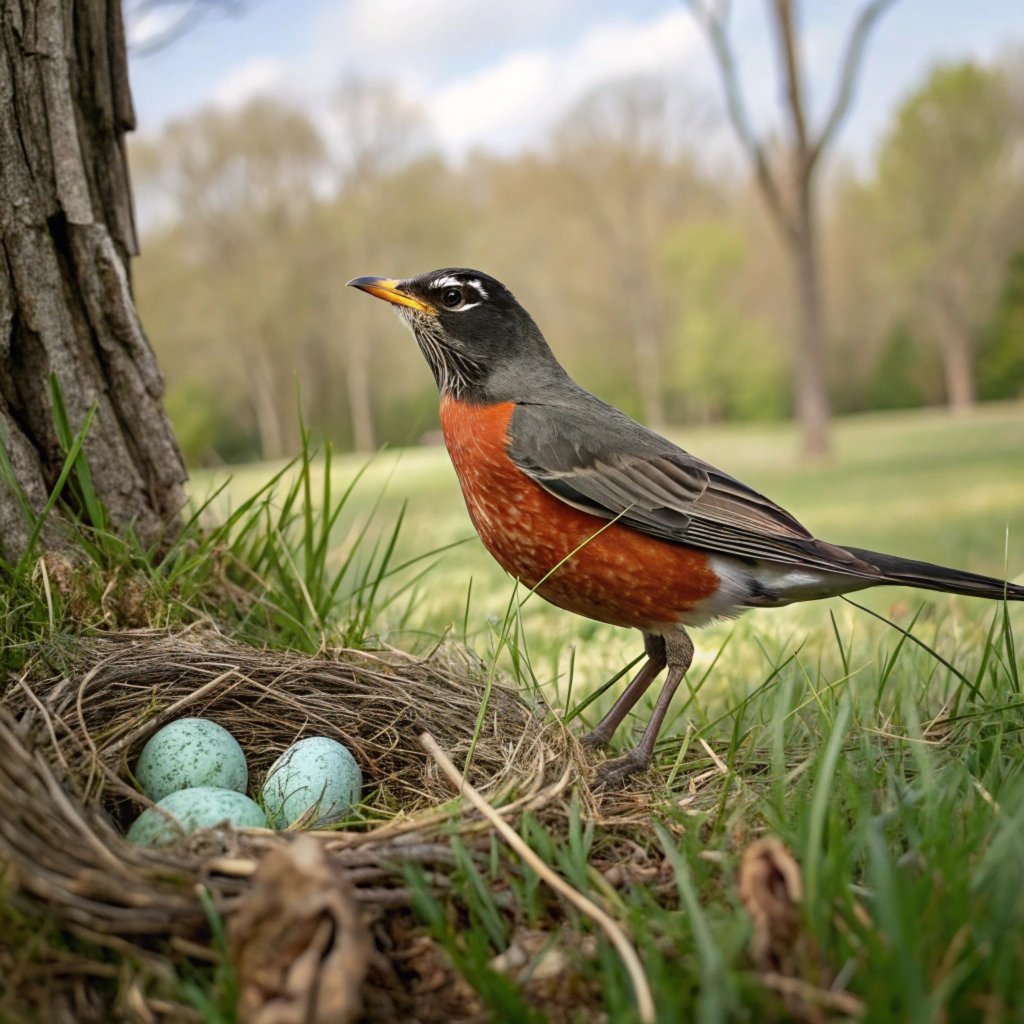
The American Robin (Turdus migratorius) is perhaps the most well-known bird associated with blue eggs. These common backyard birds are easily recognizable with their bright orange breasts and cheerful songs.
American Robins typically lay 3 to 5 eggs per clutch, each a beautiful shade of sky blue or turquoise.
The eggs measure about 2.8 to 3 cm in length and are laid in a cup-shaped nest made of grass, twigs, and mud.
Female robins incubate their eggs for about 12 to 14 days before they hatch. The vibrant blue color of robin eggs has become so iconic that it has inspired the term “robin’s egg blue” in art and design.
Interestingly, the intensity of the blue color can vary based on the female’s diet and overall health, with well-nourished robins producing eggs with a deeper, more vivid blue hue.
2. Eastern Bluebird: A Symbol of Happiness with Pale Blue Eggs
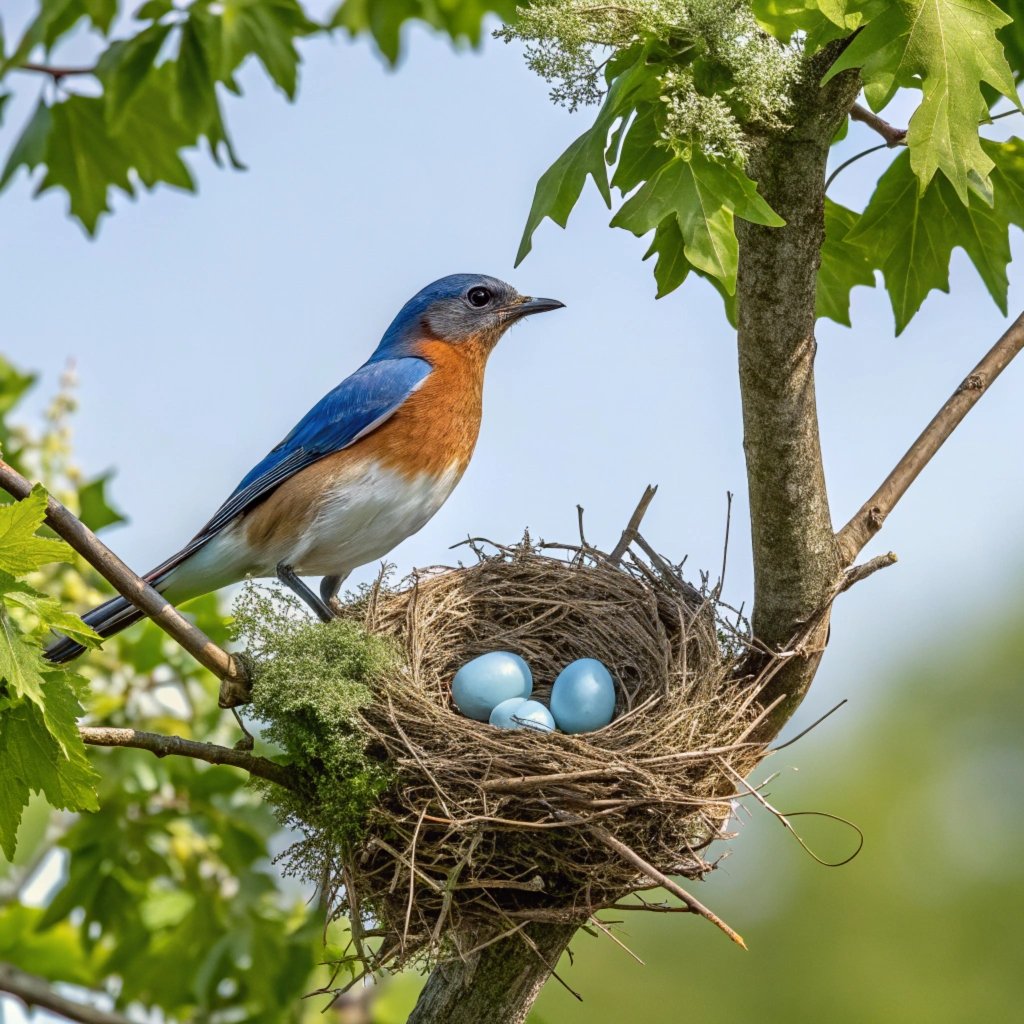
The Eastern Bluebird (Sialia sialis) is a small thrush known for its striking blue plumage and sweet, warbling song.
These cavity-nesting birds lay 3 to 7 eggs per clutch, which are typically a pale blue or occasionally white in color. Eastern Bluebird eggs measure about 2.1 cm in length and are laid in nests built in tree cavities or nest boxes.
The incubation period lasts around 13 to 16 days. Bluebirds are often associated with happiness and hope in folklore and literature, making their pale blue eggs a symbol of new beginnings.
Conservation efforts have helped increase bluebird populations by providing nest boxes in suitable habitats.
The soft blue color of their eggs provides excellent camouflage within the dim light of their nesting cavities, helping to protect the developing chicks from potential predators.
3. Blue Jay: Vibrant Birds with Speckled Blue Eggs
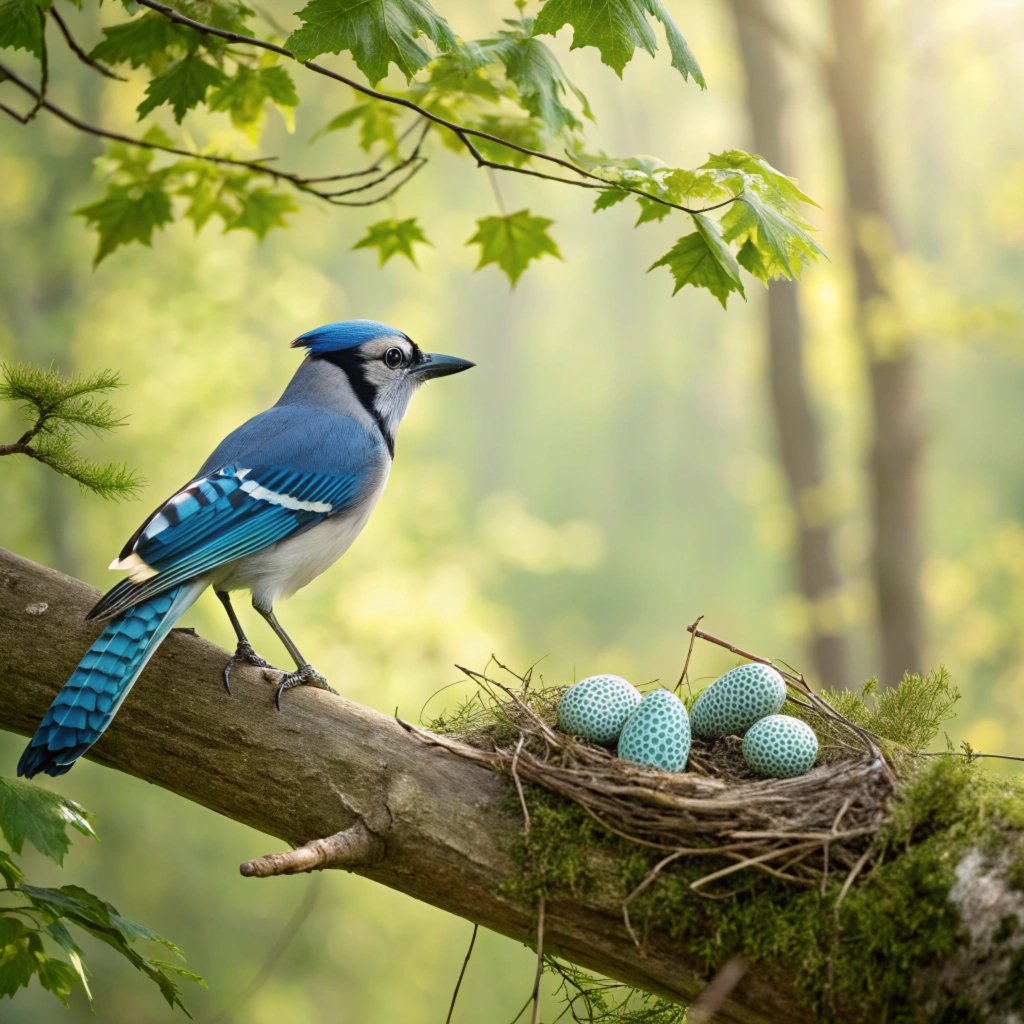
The Blue Jay (Cyanocitta cristata) is a bold and intelligent bird known for its bright blue plumage and loud, distinctive calls.
These birds lay 3 to 7 eggs per clutch, which are pale blue to light brown in color with brown speckles. Blue Jay eggs measure about 2.5 to 2.8 cm in length and are laid in nests constructed of twigs, grass, and bark.
The female incubates the eggs for approximately 16 to 18 days. The speckled pattern on Blue Jay eggs provides additional camouflage, helping to protect them from predators.
Interestingly, Blue Jays are known for their complex social behaviors and their ability to mimic the calls of other birds, including hawks.
Their beautiful blue eggs reflect the vibrant nature of these charismatic birds, adding a touch of color to their carefully constructed nests high in the trees.
4. House Finch: Adaptable Birds with Pale Blue-Green Eggs
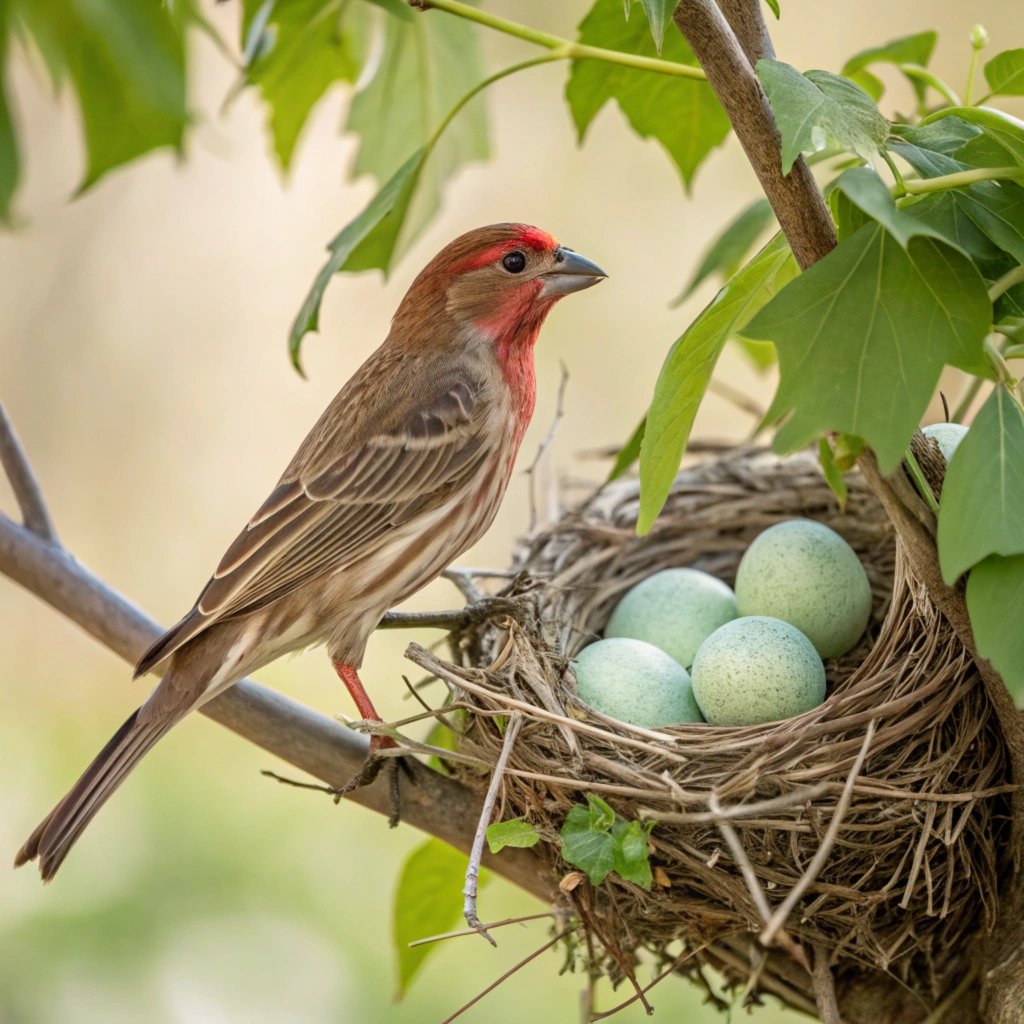
The House Finch (Haemorhous mexicanus) is a small, adaptable bird that has become a common sight in urban and suburban areas.
These birds lay 3 to 6 eggs per clutch, which are pale blue-green in color with fine black and lavender speckles.
House Finch eggs measure about 1.8 to 2 cm in length and are laid in cup-shaped nests made of grass, twigs, and other plant materials. The incubation period lasts around 13 to 14 days.
House Finches are known for their melodious songs and their ability to thrive in various habitats, from forests to city parks.
The pale blue-green color of their eggs provides excellent camouflage in the diverse nesting sites these birds choose, which can include trees, shrubs, and even hanging baskets or wreaths on porches.
5. European Starling: Invasive Species with Pale Blue Eggs
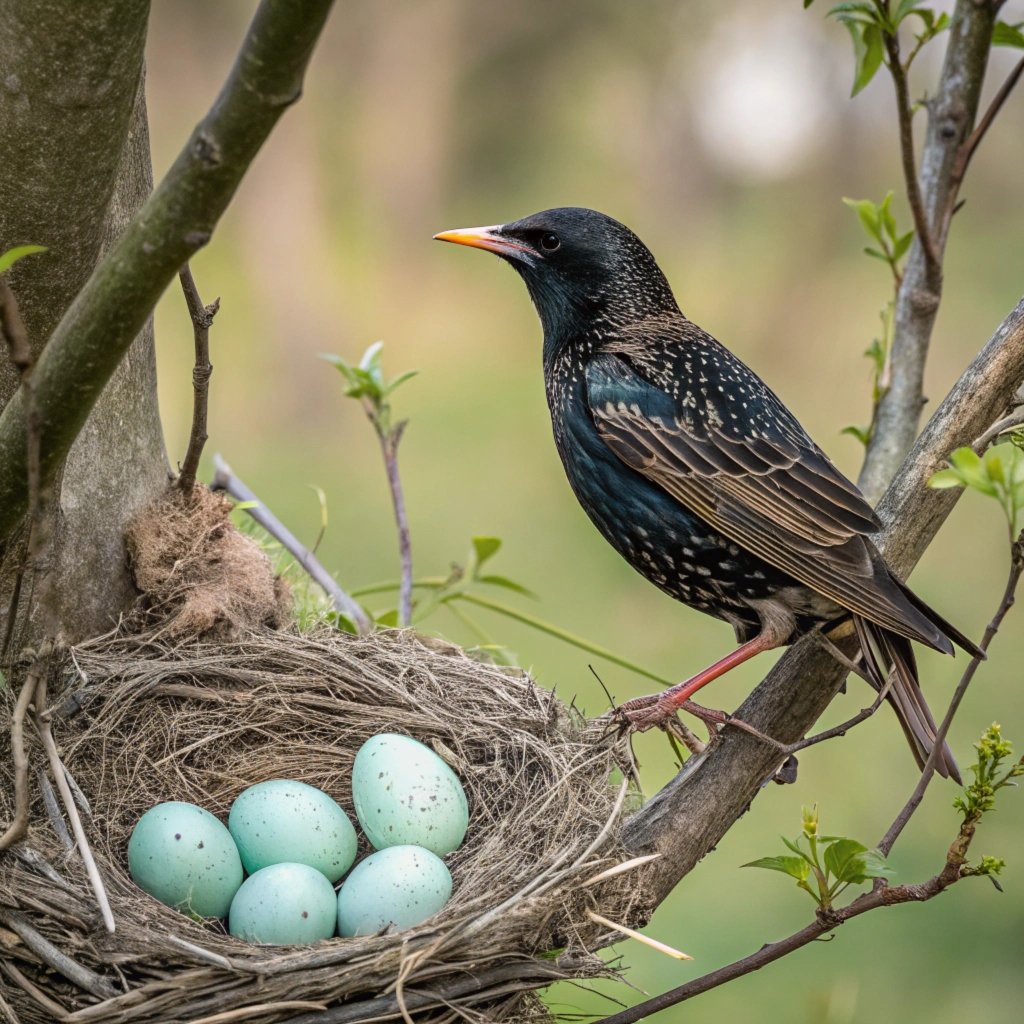
The European Starling (Sturnus vulgaris), while considered an invasive species in North America, is known for laying beautiful pale blue eggs.
These gregarious birds typically lay 4 to 6 eggs per clutch, each a delicate shade of blue that can sometimes appear almost white. Starling eggs measure about 2.5 to 3 cm in length and are laid in nests built in cavities or man-made structures.
The incubation period lasts approximately 12 to 14 days. Despite their invasive status, starlings are remarkable mimics and can imitate a wide range of sounds, including human speech and other bird calls.
The pale blue color of their eggs provides camouflage in the often dimly lit nesting cavities they prefer, helping to protect the developing chicks from potential predators.
6. Red-winged Blackbird: Marsh Dwellers with Blue-Green Eggs
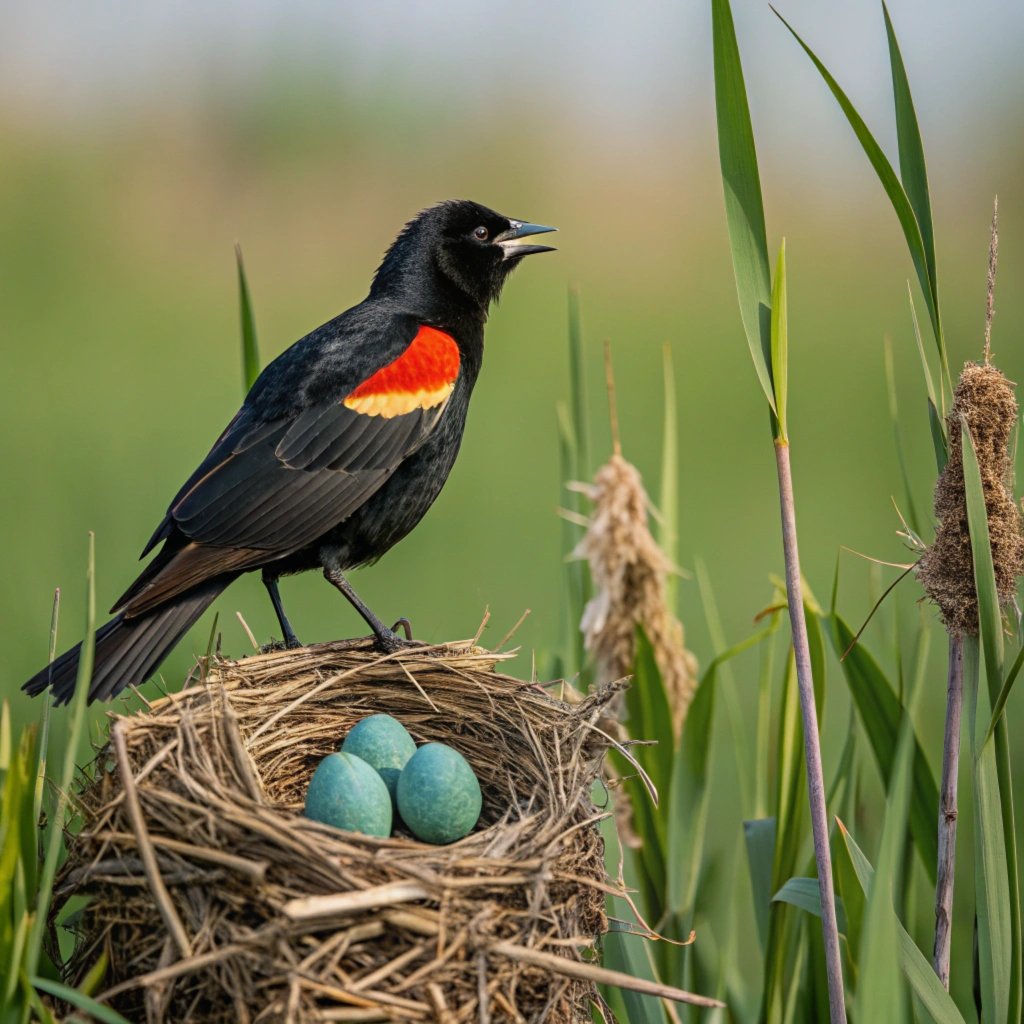
The Red-winged Blackbird (Agelaius phoeniceus) is a striking bird known for the male’s distinctive red and yellow shoulder patches. These birds, often found near wetlands and marshes, lay 3 to 4 eggs per clutch.
The eggs are pale blue-green in color with dark markings and measure about 2.5 cm in length. Red-winged Blackbirds build their nests in reeds or low vegetation near water, and the female incubates the eggs for approximately 11 to 13 days.
The blue-green color of their eggs provides excellent camouflage among the aquatic vegetation where they nest.
These birds are known for their bold behavior, often mobbing larger birds and even humans who venture too close to their nesting sites.
The beautiful blue-green eggs of the Red-winged Blackbird are a hidden treasure in the marshy habitats they call home.
7. Dunnock: Humble Birds with Vibrant Blue Eggs
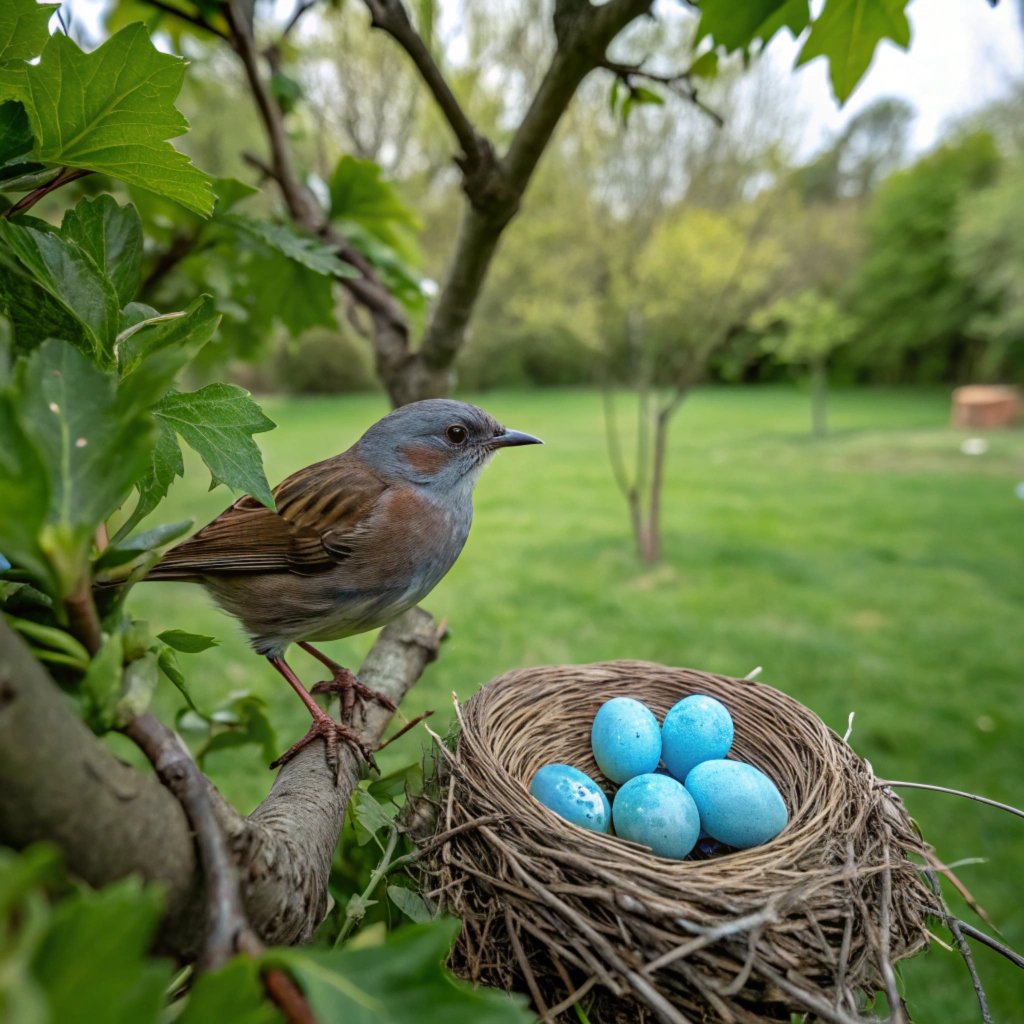
The Dunnock (Prunella modularis), also known as the hedge sparrow, is a small, unassuming bird common in Europe and Asia. Despite their modest appearance, Dunnocks lay strikingly beautiful blue eggs.
They typically lay 3 to 5 eggs per clutch, each a vivid blue color that stands out in their well-hidden nests.
Dunnock eggs measure about 1.9 cm in length and are incubated for approximately 12 to 14 days. These birds are known for their complex mating systems, which can involve multiple partners.
The bright blue color of their eggs is thought to be a signal of female quality, with healthier females producing more intensely colored eggs.
Dunnocks build their nests low in dense vegetation, where the blue eggs are surprisingly well-camouflaged despite their vibrant hue.
8. Common Myna: Adaptable Birds with Turquoise Eggs
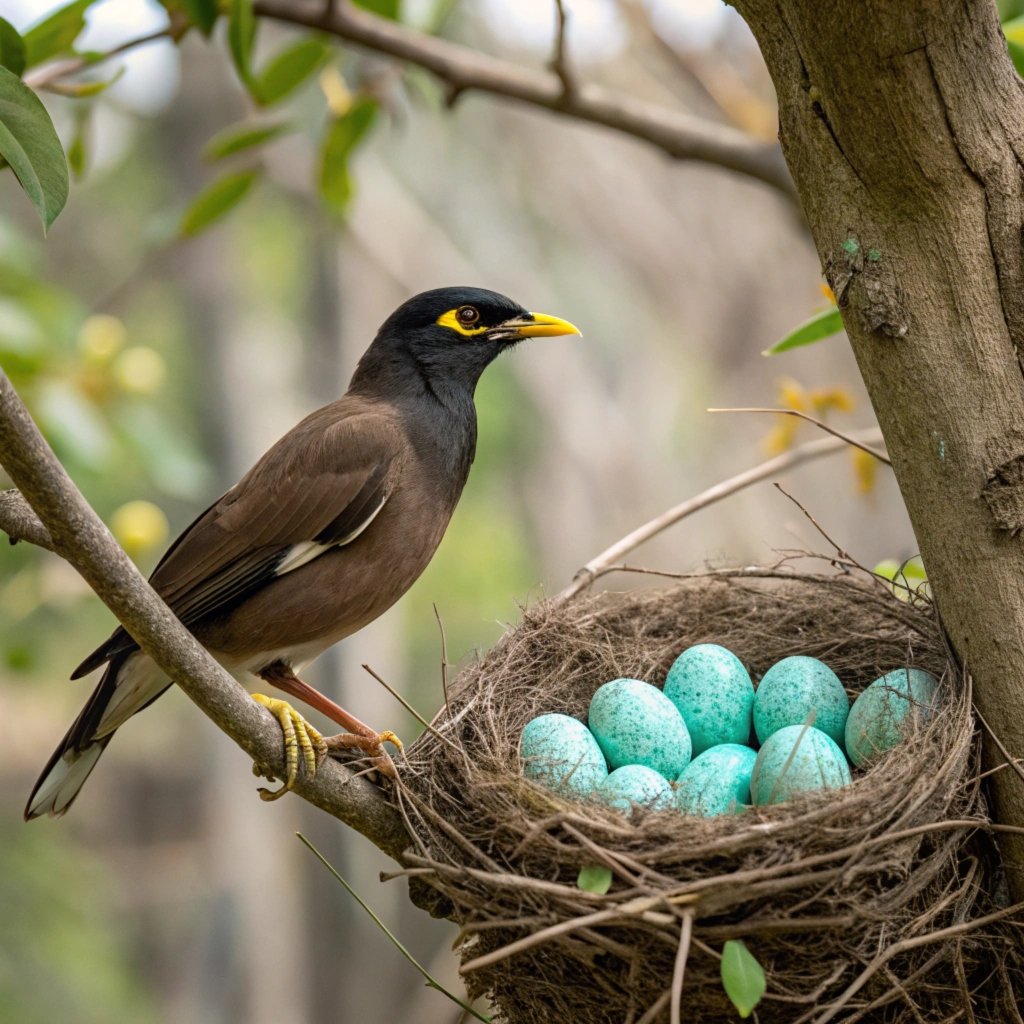
The Common Myna (Acridotheres tristis) is a highly adaptable bird native to Asia but now found in many parts of the world. These intelligent birds lay 4 to 5 eggs per clutch, which are a beautiful turquoise or blue-green color.
Myna eggs measure about 2.9 cm in length and are laid in nests built in tree cavities, buildings, or other structures. The incubation period lasts around 13 to 14 days.
Common Mynas are known for their vocal abilities and can mimic a wide range of sounds, including human speech.
The turquoise color of their eggs provides camouflage in the varied nesting sites these adaptable birds choose.
Despite being considered an invasive species in some regions, the Common Myna’s beautiful blue-green eggs remain a fascinating aspect of their reproductive biology.
9. Snowy Egret: Elegant Waders with Pale Blue Eggs
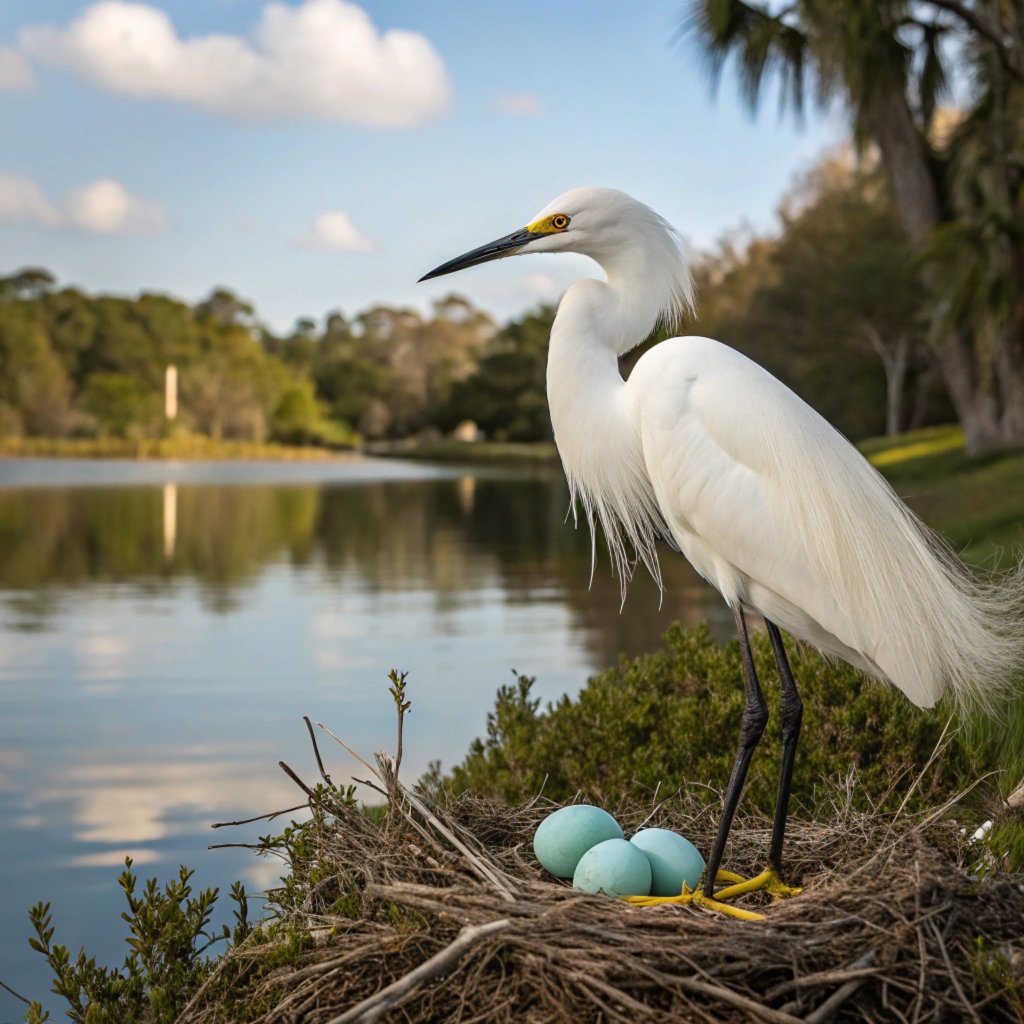
The Snowy Egret (Egretta thula) is a graceful wading bird known for its pure white plumage and distinctive yellow feet. These elegant birds lay 3 to 5 eggs per clutch, which are a pale blue-green color.
Snowy Egret eggs measure about 4.3 cm in length and are laid in platform nests built in trees or shrubs near water. The incubation period lasts approximately 20 to 24 days.
Snowy Egrets were once hunted nearly to extinction for their plumes, but conservation efforts have helped their populations recover.
The pale blue-green color of their eggs provides camouflage among the coastal and wetland habitats where these birds nest.
Watching a Snowy Egret tend to its beautiful blue eggs in a secluded rookery is a truly special sight for bird enthusiasts.
10. Gray Catbird: Melodious Mimics with Greenish-Blue Eggs
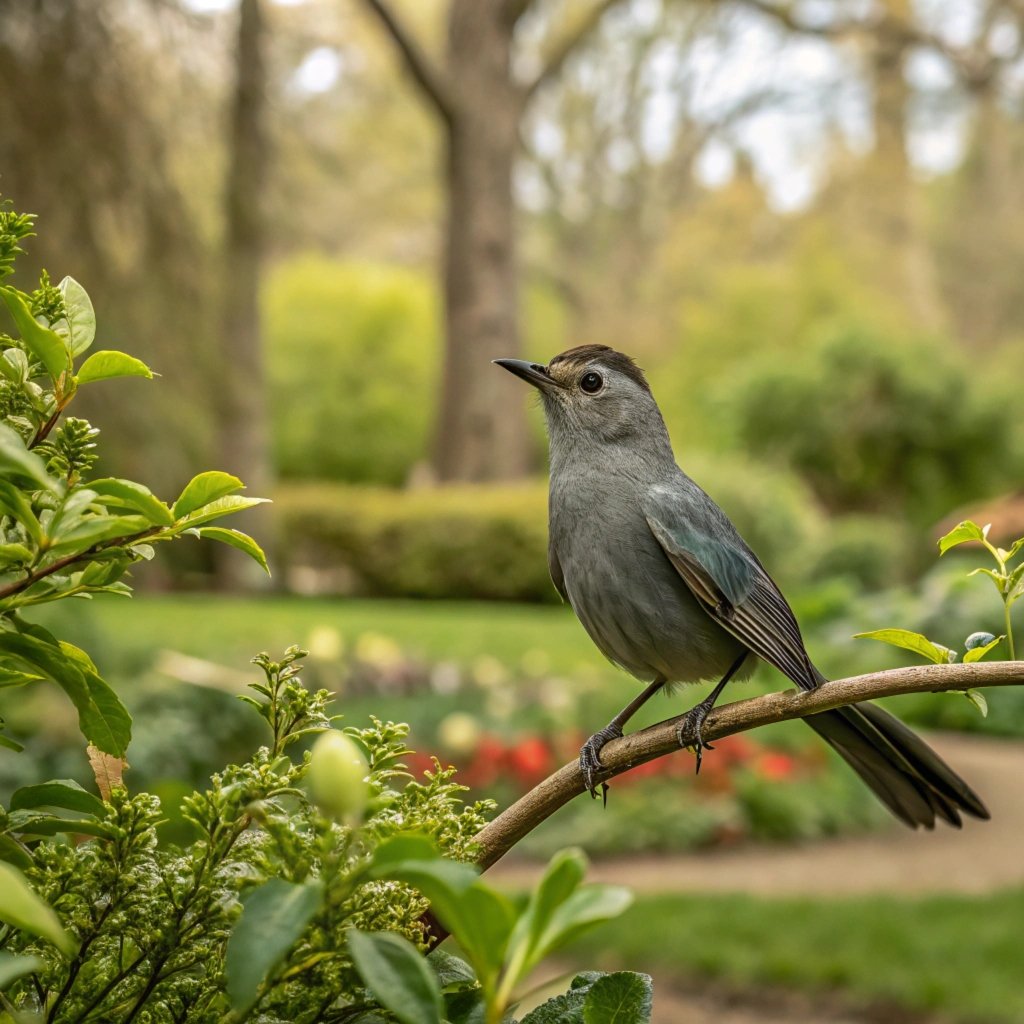
The Gray Catbird (Dumetella carolinensis) is a skilled vocal mimic known for its cat-like mewing call. These secretive birds lay 3 to 5 eggs per clutch, which are a deep greenish-blue color.
Catbird eggs measure about 2.3 cm in length and are laid in cup-shaped nests built in dense shrubs or small trees. The female incubates the eggs for approximately 12 to 13 days.
Gray Catbirds are known for their extensive repertoire of songs and their ability to imitate the calls of other birds and even mechanical sounds.
The deep greenish-blue color of their eggs provides excellent camouflage within the leafy environments where they nest.
Discovering a Gray Catbird’s nest with its jewel-like blue eggs is a rare treat for birdwatchers and nature enthusiasts alike.
FAQs
Why do some birds lay blue eggs?
Birds lay blue eggs due to a pigment called biliverdin, which is deposited on the eggshell during the laying process. This pigment is also responsible for creating green and olive hues in eggs. The blue color can serve various purposes, including camouflage and protection from UV radiation.
Are blue eggs healthier than other colored eggs?
There is no scientific evidence to suggest that blue eggs are healthier than eggs of other colors. The nutritional content of an egg is determined by the bird’s diet and overall health, not the color of the shell.
Can the shade of blue in bird eggs vary?
Yes, the shade of blue in bird eggs can vary significantly, even within the same species. Factors such as the bird’s diet, health, and environmental conditions can influence the intensity and hue of the blue color.
Do any other animals lay blue eggs?
While blue eggs are most commonly associated with birds, some reptiles, such as certain species of lizards, can also lay blue or bluish-tinted eggs. However, this is relatively rare among non-avian species.
Can the color of a bird’s eggs help with species identification?
Yes, egg color can be a useful characteristic for identifying bird species, especially when combined with other factors such as nest structure, habitat, and the appearance of the parent birds. However, it’s important to note that egg color can vary within species and should not be the sole factor used for identification.

Hello, I’m Emily Price, the founder of Birds Affection. As a passionate bird enthusiast and spiritual seeker, I’ve always been fascinated by the symbolic meanings and mystical connections between birds and our lives. On this website, I share my knowledge and insights on the spiritual significance of various bird species, exploring their roles as messengers, guides, and teachers. Through my writing, I aim to inspire and educate others on the profound wisdom and beauty that birds bring to our world. Join me on this journey as we delve into the enchanting realm of bird symbolism and discover the hidden meanings behind these magnificent creatures.

